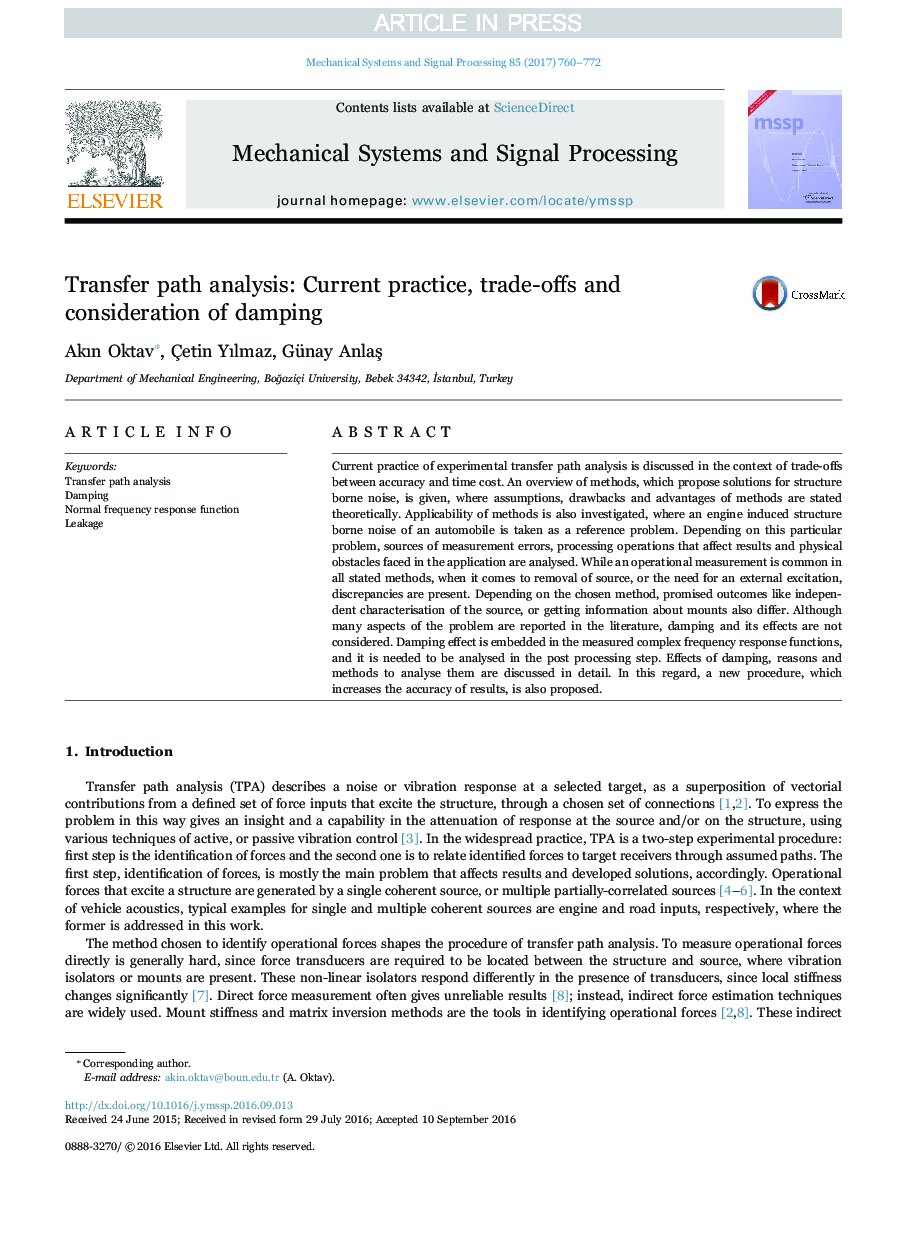| Article ID | Journal | Published Year | Pages | File Type |
|---|---|---|---|---|
| 6954869 | Mechanical Systems and Signal Processing | 2017 | 13 Pages |
Abstract
Current practice of experimental transfer path analysis is discussed in the context of trade-offs between accuracy and time cost. An overview of methods, which propose solutions for structure borne noise, is given, where assumptions, drawbacks and advantages of methods are stated theoretically. Applicability of methods is also investigated, where an engine induced structure borne noise of an automobile is taken as a reference problem. Depending on this particular problem, sources of measurement errors, processing operations that affect results and physical obstacles faced in the application are analysed. While an operational measurement is common in all stated methods, when it comes to removal of source, or the need for an external excitation, discrepancies are present. Depending on the chosen method, promised outcomes like independent characterisation of the source, or getting information about mounts also differ. Although many aspects of the problem are reported in the literature, damping and its effects are not considered. Damping effect is embedded in the measured complex frequency response functions, and it is needed to be analysed in the post processing step. Effects of damping, reasons and methods to analyse them are discussed in detail. In this regard, a new procedure, which increases the accuracy of results, is also proposed.
Keywords
Related Topics
Physical Sciences and Engineering
Computer Science
Signal Processing
Authors
Akın Oktav, Ãetin Yılmaz, Günay AnlaÅ,
